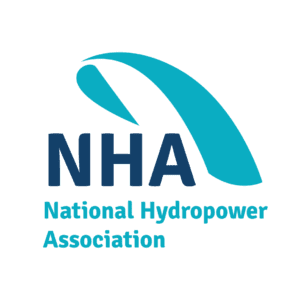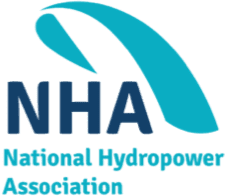
New Report Shows Marine Energy Has Potential to Power 220 Million U.S. Homes
Leveraging just one-tenth of available marine energy resources would equate to 5.7% of U.S. electricity generation
Washington, D.C. (March 15, 2021) – Recognizing the value of America’s next-generation renewable, the U.S. Department of Energy (DOE) and the National Renewable Energy Laboratory (NREL) have issued a new report that identifies the potential of marine energy resources (wave, tidal, ocean current, ocean thermal, and riverine marine) titled Marine Energy in the United States: An Overview of Opportunities. Utilizing national and state level data, the report finds that the total marine energy technical resource in the 50 states to be 2,300 TWh/yr or the equivalent to roughly 57% of 2019 U.S. electricity generation – enough to power 220 million U.S. homes.
“The new report demonstrates that marine energy technologies could be the missing link for meeting our nation’s clean energy goals and decarbonizing our electricity grid,” said Malcolm Woolf, NHA President and CEO. “Much like the development of solar energy, with each passing day, marine energy moves one step closer to full scale commercialization. We believe that the marine energy industry is poised for gigawatt (GW) scale deployment in the United States in the coming decade. President Biden and Congress have proposed an ambitious target of achieving 100 percent clean electricity by 2035, and tapping into just a fraction of marine energy’s potential could help make that a reality. ”
Report Pinpoints National, Regional and State Potential
In the report, NREL identified specific areas within the U.S. where marine energy devices could be deployed and its potential contribution for generation. For example,
- On the West Coast, wave energy would be the dominant source, where there is a potential for 250 TWh/yr, which is equivalent to 67% of the region’s net electricity generation in 2019, enough to power 23 million homes.
- On the East Coast, ocean thermal would be the dominant source, where there is a potential 460 TWh/y, which is equivalent to 49% of the region’s net electricity generation in 2019 enough to power 43-million homes.
Ongoing U.S Marine Energy Device Deployments
Throughout the country, marine energy developers are working to develop and deploy new power generation devices. For example, last October, Verdant Power deployed its TriFrame® Mounted Gen-5 Tidal Turbines, in New York City’s East River. To date, the device has exceeded expectations and generated 100 MWh in only the first 85 days of continuous operation, a record for marine energy production in the United States. This is far earlier than projected, which means the demonstration project is on track to generate more than 430 MWh in one year of operation.
In Igiugig, Alaska, the Ocean Renewable Power Company (ORPC) has demonstrated its 40-kW RivGen® Power System in the Kvichak River. It operated throughout 2020 and proved its ability to survive the harsh Alaskan winters. A second RivGen® Power System is being prepared for deployment at Igiugig this summer.
“Marine energy isn’t theoretical anymore, as innovations within the industry are leading to deployments that are proving the viability of the technologies” said Woolf. “One of the most significant challenges to the domestic marine energy industry is the need to continually attract private investment to fund innovation and initial demonstrations during the pre-competitive stages of technology development, primarily due to the timelines and technical risks involved. As with more mature power generation technologies, such as advanced gas turbines or solar converter systems, support from the U.S. Federal Government for critical early stage innovation and technology deployment efforts is key to igniting commercialization of the marine energy industry.”
Research Leads the March Towards Commercialization
For domestic marine energy developers, research and testing devices remains front and center. Assisting this effort, today, there are now four National Marine Energy Centers: Pacific Marine Energy Center (Oregon State University, University of Washington, and the University of Alaska Fairbanks); Southeast National Marine Renewable Energy Center at Florida Atlantic University; Hawaii National Marine Renewable Energy Center at the University of Hawaii; and Atlantic Marine Energy Center based at the University of New Hampshire.
Additionally, on March 1, 2021, the Federal Energy Regulatory Commission (FERC) issued a 25-year hydroelectric production license for Oregon State University’s PacWave South testing facility to deploy and test technologies to generate energy from ocean waves. It’s FERC’s first-ever license for a wave energy facility. The ability to test devices in the unforgiving waters of the Pacific Ocean, about 6 nautical miles off the coast of Newport, Oregon, is expected to go a long way in proving the viability of devices.
“Establishing and expanding critical testing infrastructure, including grid connection and deployment equipment, for pre-commercial marine energy devices along with support for technology validation activities is critical to moving forward,” said Woolf. “We are encouraged by the network of U.S. companies, supported by universities and the National Labs, that are working to unlock the global marine energy resource and the new Blue Economy.”
About NHA
The National Hydropower Association (NHA) is a nonprofit association dedicated exclusively to promoting the growth of clean, renewable hydropower and marine energy. On April 28-30, NHA will be hosting the virtual International Conference on Ocean Energy (ICOE) 2021, supported by the International Energy Agency (IEA) through Ocean Energy Systems (OES). Every two years, ICOE brings together international stakeholders, experts and exhibitors from the marine energy sectors (tidal, wave, ocean currents, ocean thermal gradients) to discuss device innovation, new market developments and regulatory frameworks to spur commercialization. This is the first time the United States has hosted this important international event. For more information on ICOE 2021 visit www.icoe2021.org.
###


